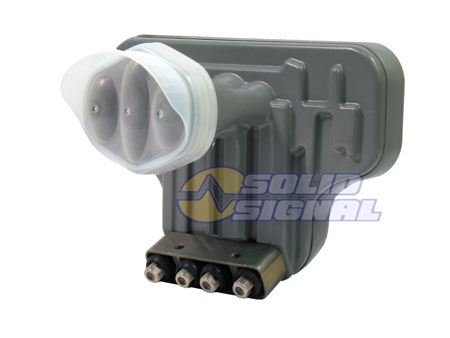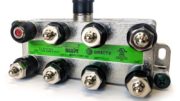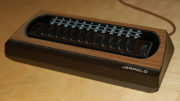This very question came to me the other day. I had sworn I’d written an article about this, but somehow I was wrong. Or, it’s possible that it’s one of the ones that was lost when we changed blog platforms in 2018. But no matter, let’s dig into it.
Basics of an LNB
The LNB is, technically, the electronic part that receives satellite signals. If you want to be really accurate, only the working parts count, and none of the housings count. But life is rarely that accurate.
An LNB consists of three parts. First, there’s the satellite antenna. This is extraordinarily small. Satellite signals have a wavelength of about 1.5 centimeters, or roughly 5/8 of an inch. Traditional wisdom says that half of that wavelength is generally enough for good reception, but when it’s that small, why skimp? So these receiving elements are pretty darn small, simple as that.
The signals that are received are incredibly weak. Of course they are, because they’ve traveled a minimum of 22,000 miles to get to you. Depending on where you are on the planet, they might even travel more because of the angle between you and the satellite.
The “LN”
Once that weak signal is received, it needs to be amplified. It’s so weak that it would simply disappear in the noise that’s inherent in cables, connectors, and splitters. But, obviously you don’t want to introduce more noise if you can avoid it. That’s why you use a Low Noise amplifier to boost those signals to where they’re about -40dBm, which is still pretty darn weak. It’s about .00004 watts. The signal could get boosted more, and it will be if needed, but that’s enough to go through a cable.
The “B”
There’s one more step that needs to happen. Satellite signals at a frequency of 19,000 – 40,000 MHz would require very expensive cable. High frequencies, you see, need more expensive cable than lower frequencies. The cable just needs to be made to a higher standard. In order to use common RG6 cable, the signals are converted down to lower frequencies. In this case they’re converted to 950-2150MHz. So how is a frequency range of 21,000MHz converted to a frequency range of 1,200MHz?
The secret is that all those frequencies from 19k to 40k aren’t used. Only specific ones are. So, those specific groups of frequencies, which we call blocks, are converted separately and put into specific frequencies in the new range. We call the device that does that a Block downconverter.
Yeah but what about the “F?”
First off, when someone uses the term LNBF, they’re technically being more accurate than when you say “LNB.” Typically “LNB” just means the electronics, as I said. But there’s more. There’s the white plastic part, which acts as a radome and protects the LNB. There’s a metal wave guide which gets the signals where they need to go. And, there’s a protective plastic cover which gives the whole thing stability and a bit of style. Together, that stuff is referred to as a Feedhorn, which is the thing that gives the LNBF its name.
As I said, it’s technically more accurate to say “LNBF” than “LNB.” The LNBF includes the antenna, low-noise amplifier, block downconverter, and feedhorn. But, we often just say “LNB.” Maybe it just feels better on the tongue to end on an “eeee” sound than an “efff” sound. But it doesn’t matter. There are plenty of examples of using a part of something to represent a whole. It’s so common that there’s a term for it in the literary world: synecdoche.
Get what you need from Solid Signal
Solid Signal is your source for everything from LNBs to complete satellite systems and a whole lot more. Get the parts the professionals use when you shop at SolidSignal.com! If you have questions, call us at 888-233-7563.




